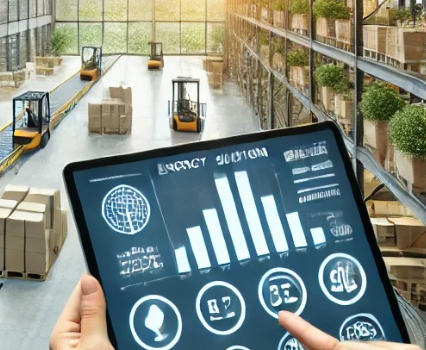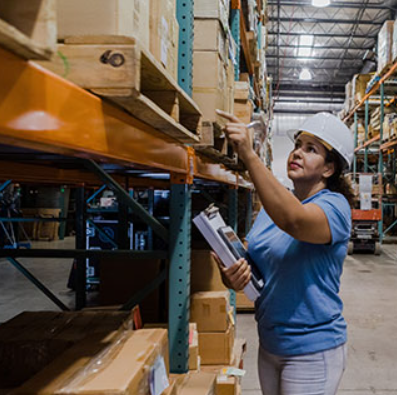
One of the biggest concerns for warehouse managers today is the rising cost of energy. While there’s no quick fix to halt these increases, now is an excellent time to start exploring practical strategies to reduce energy consumption across your business. In this post, we’ll share some cost-effective ways to lower your warehouse energy usage, some of which can be implemented quickly, while others may require more planning and investment.
How to Reduce Your Warehouse Energy Costs
Reducing energy costs doesn’t just help your bottom line; it also contributes to the sustainability of your business. By lowering your energy usage, you can improve your corporate social responsibility (CSR) profile, which can be beneficial for both your brand image and the environment. Let’s focus primarily on cost reduction and consider some key questions to ask about your facility’s energy usage.
1. Do You Understand Your Warehouse’s Energy Consumption?
The first step in addressing energy costs is to understand where your energy is being used. A thorough energy audit is an excellent way to identify areas of high energy consumption. If an audit isn’t feasible, consider the following factors that typically influence warehouse energy costs.
2. Is Your Warehouse Lighting Energy-Efficient?
Lighting is one of the largest energy expenses in a warehouse. If your warehouse still uses incandescent, halogen, or HID lighting, you are missing out on significant savings. Switching to more energy-efficient options like LED or induction lighting can cut your energy consumption drastically. Although the initial investment for upgrading lighting can be high, these lights last much longer and use far less energy, providing a substantial return on investment.
LED lights, for example, can last up to 50,000 hours—approximately five and a half years—while induction lights often last twice that long.
3. Are You Lighting Unused Warehouse Areas?
Another way to cut lighting costs is by assessing whether certain areas of the warehouse need to be lit at all times. One way to address this is by installing motion sensors and timers in areas that aren’t in continuous use. This ensures lights are only on when necessary, which is a cost-effective method for reducing energy usage.
For even more savings, you could explore adding skylights to your warehouse or rearranging the layout to increase natural light. While these changes require an initial investment, they could save you considerable amounts on energy in the long term.
4. How Efficient Is Your Warehouse Layout?
When reviewing your warehouse layout, consider whether optimizing storage can help reduce energy consumption. By adjusting shelving and racking, you may be able to store more products in areas that require less lighting or energy-intensive conditions. For example, placing slow-moving items in less-used sections can free up energy for areas with more frequently accessed inventory.
Our team at Logistics Bureau has helped warehouse operators optimize layouts for decades. If you’re looking for expert advice on improving your warehouse design for both operational efficiency and energy savings, feel free to get in touch.
5. Are Your HVAC Systems Energy-Efficient?
The efficiency of your heating, ventilation, and air conditioning (HVAC) systems plays a significant role in your warehouse’s energy consumption. Keeping your HVAC systems well-maintained according to the manufacturer’s recommendations is key to maximizing their efficiency.
If your HVAC equipment is outdated, replacing it with newer, more efficient models can result in long-term savings. Modern HVAC systems are far more energy-efficient than older models and can help reduce the amount of energy required to heat or cool your facility.
Additionally, zoning your HVAC system to heat or cool only the areas that need it can provide further energy savings, similar to optimizing lighting control.
6. Is Your Warehouse Properly Insulated?
No matter how efficient your HVAC system is, proper insulation is essential to maintaining energy efficiency. Good insulation helps keep the temperature stable inside your warehouse, reducing the need for continuous heating or cooling. With proper insulation, your HVAC systems will run less frequently, saving energy.
If your warehouse has fiberglass or mineral wool insulation, you might want to consider upgrading to more effective materials such as spray foam or loose-fill insulation, which offer better thermal resistance.
7. How Efficient Are Your Operational Equipment and Machinery?
Beyond lighting and HVAC systems, operational equipment like forklifts, conveyors, and packaging machinery also contribute to your energy costs. Assessing the efficiency of this equipment is essential to reducing your overall energy expenditure. If your equipment is outdated or inefficient, replacing it with energy-efficient alternatives could significantly lower your energy bills.
Even if you’re already using energy-efficient machinery, regular maintenance is crucial to ensure that it continues to perform at peak efficiency.
8. Are Your Employees Aware of Energy Consumption?
Energy efficiency in the warehouse is not only about systems and equipment; it’s also about how your employees use these resources. A simple staff training program focused on energy-conscious practices can help reduce unnecessary energy use. Encourage your team to turn off lights and equipment when not in use and to report any energy waste they observe.
9. What Other Energy-Saving Strategies Can You Implement?
Sometimes the best energy-saving ideas come from the team on the ground. After considering the points mentioned above, hold a brainstorming session with your staff to gather additional energy-saving ideas. Some simple fixes, like using white paint to reflect more natural light or removing bulbs from multi-bulb fixtures, can make a significant difference.
For more sophisticated measures, consider installing solar panels or wind turbines, or implementing advanced energy management systems. Additionally, check with your local government or energy suppliers for any grants or incentive programs that could help offset the cost of these upgrades.
Reducing Warehouse Energy and Labor Costs in the Future
While it’s unlikely that energy costs will decrease in the near future, taking proactive steps to reduce energy consumption can help mitigate the financial impact. By addressing energy inefficiencies in your warehouse, you’ll not only save money but also contribute to a more sustainable business model. Over time, even small reductions in energy usage can add up to substantial savings, making a big difference in the long term.












